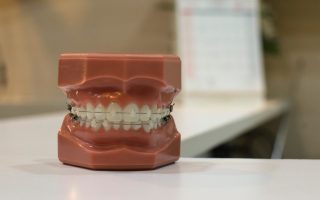Mention the word orthodontist and many people immediately think of the teen years and braces. But as experts in the formation of the jaw and the positioning of teeth, an orthodontist’s skills extend far beyond straightening teeth.
In fact, there are a host of reasons to visit an orthodontist at almost any stage of life and the benefits of doing so can range from improved sleep and speech to reducing the need for more invasive orthodontic work at a later stage.
With that in mind, here is a quick guide for when you should see an orthodontist…
What is an orthodontist?
An orthodontist is a dental professional with specialist training in aligning teeth and the jaws.
In addition to five years of studying general dentistry and two years clinical experience working as a dentist, an orthodontist undertakes a further three years study to specialise in this field.
Their innate skill lies in creating an aesthetically pleasing smile that ensures the teeth meet correctly, and the jaw is positioned properly.
This not only sets patients up for a lifetime of better oral health but can improve the quality of sleep, reduce wear on the teeth, and remedy speech issues.
So, what are the key prompts that it’s time to see an orthodontist?
When your child is aged seven to 10
The Australian Society of Orthodontists recommends children should first visit an orthodontist when they are aged between seven and 10.
At this critical stage of development, some of the permanent teeth have emerged, but the jaw is still taking shape.
Visiting an orthodontist allows a highly skilled professional to flag any potential issues and offer early intervention if appropriate. This early intervention can include treatments that better align or widen the jaw, allowing additional room for incoming adult teeth.
Ultimately, treating such issues early may result in less invasive treatments in the future, and reduce the need to remove teeth.
When your child is a teen
The reason the teen years are often associated with braces is because this is an ideal time to gently manoeuvre teeth and align the jaw. At this stage of development all adult teeth have emerged but the upper palate has not yet fused and the body is still continuing to grow.
If your child has not seen an orthodontist earlier, the early teen years is the best time to get an assessment of potential issues with their teeth and jaw.
When you are self-conscious about your smile
Although the teen years are often associated with orthodontic treatment, it’s never too late to seek your perfect smile and gain the self-confidence you deserve.
With discrete options like Invisalign and efficient treatments like Damon braces, it is becoming more and more common for adults to undergo orthodontic treatment.
A recent survey by Orthodontics Australia found over half the population is self-conscious about their smile. If you’re amongst this statistic, what’s stopping you from having the smile you always dreamed of?
When your teeth are wearing unevenly
Many people fail to appreciate that teeth that are crooked or fail to align correctly can have very real long-term implications for your dental health, and this can include uneven tooth wear, tooth cracking and even tooth loss.
Teeth that aren’t aligned properly may grind against each other when you eat, sleep or even when you speak, gradually wearing them down or leaving them more prone to trauma.
The best option is to treat the problem at the root cause, aligning teeth so they meet at the correct angle and under the right circumstances.
When your teeth do not meet properly
Just as teeth that do not align may grind against each other, they may also fail to meet. This can affect the way you chew and eat. In turn, this places additional pressure on other teeth and leaves them prone to wear, cracking, and chipping.
In addition, you may inadvertently compensate by shifting your jaw in an unnatural fashion so you can chew effectively. Over time this can result in jaw strain and pain.
When you have sleep apnoea
Did you know orthodontics can offer an effective solution to sleep apnoea? In fact, the Australian Sleep Association and American Academy of Sleep Medicine now note oral appliances are a key treatment.
Orthodontic treatments involve creating a Mandibular Advancement Splint such as SomnoDent that is worn during the night. It works by shifting the jaw slightly forward to keep the airway open.
Painless, non-invasive and adjustable, this splint resembles a clear mouth guard and is as simple to use as a retainer, providing a discreet, comfortable treatment option.
If your teeth shift
Whether it’s due to a missing adult tooth, grinding, gum disease or pregnancy, adults sometimes find their once perfect smile begins to alter over time.
Pregnancy is a key contributor to this with the hormone that helps prepare the body for birth also allowing ligaments including the periodontal (jaw) ligament to relax and stretch.
If you find your previously straight smile is experiencing a bit of a shift, it is better to see an orthodontist sooner rather than later.
This allows any issues to be remedied using minor treatments like plates or aligners rather than having to undergo extensive orthodontic work.
Meanwhile, orthodontists can also assist if you are missing an adult tooth and need sufficient space to be created in order to fit a prosthetic replacement, or alternatively they may close the gap and ensure teeth remain straight in the process.
About Norwest Orthodontics
Norwest Orthodontics specialises in helping you achieve a great smile, no matter your age. We feature a range of orthodontic treatments that span from early intervention right through to remedial adult work.
We also have a suite of treatments available that include discrete, removeable Invisalign braces, and welcome the opportunity to work with you to achieve the smile you’ve always dreamed of.
You can learn more about our services, or contact us here to make an appointment here.




